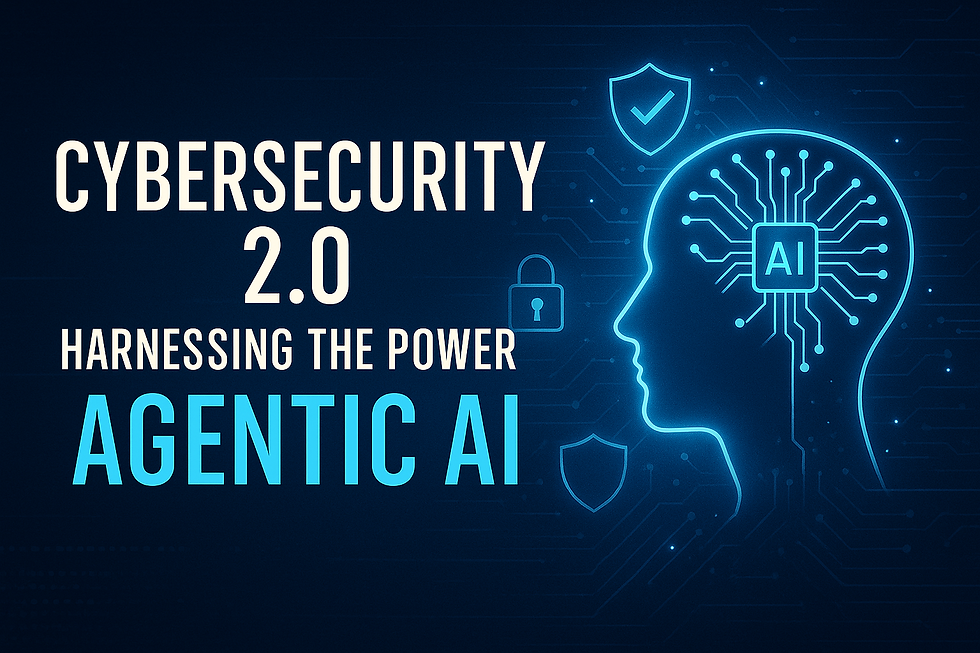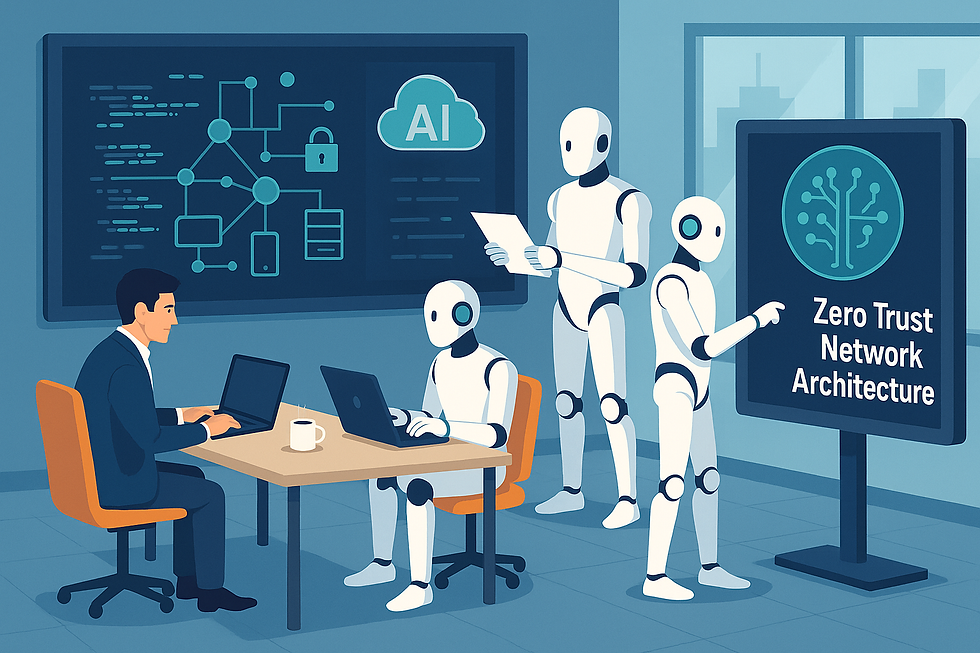Hackers' Corner: The Deepfake Dilemma
- Emmy Henz

- Aug 5
- 3 min read

AI is rapidly transforming cybersecurity, and despite its widely known benefits, it’s not always for the better. This summer, a new wave of deepfake attacks made headlines when cybercriminals impersonated high-ranking U.S. officials using AI-generated video, audio, and text messages. These weren’t your average phishing emails. This was synthetic social engineering on a whole new level.
Fake Faces, Real Risks
In one alarming incident, someone used AI to create a convincing deepfake of Secretary of State, Marco Rubio. The attackers contacted foreign ministers, a U.S. senator, and a state governor via voicemail, Signal, and text - attempting to start conversations under the guise of official diplomatic outreach. The voice sounded like Rubio. The message carried authority. But it wasn’t real.
This wasn't an isolated case. Earlier this year, another deepfake of Rubio circulated, falsely claiming he planned to cut off Ukraine’s access to Elon Musk’s Starlink service. Ukrainian officials had to step in and publicly correct the misinformation. And in May, someone used similar AI-powered tactics to impersonate Trump’s chief of staff, Susie Wiles.
These attacks weren’t just about spreading lies - they were designed to spark real conversations that could lead to data leaks, strategic errors, or worse.
Deepfakes = Dangerous Conversations
Deepfakes aren't just a novelty - they’re a serious threat to national security. When people believe they’re communicating with a trusted leader, they may unknowingly disclose sensitive information or act on false instructions. According to cybersecurity experts, these types of attacks usually have two goals: extracting confidential information or gaining access to secure systems.
What makes deepfakes especially dangerous is their ability to erode trust. If anyone could be a fake, who can you trust? That uncertainty plays directly into the hands of cybercriminals - and foreign actors looking to destabilize political, military, or diplomatic processes.
The Rise of Synthetic Misinformation
This isn't just about impersonation. AI-generated media is also being used to manipulate public opinion and interfere with elections. Earlier this year, voters in New Hampshire received a robocall using a fake voice that sounded like President Biden, urging them not to vote in the primary. While the person responsible claimed it was meant to raise awareness about AI dangers, the impact was real - and chilling.
As these tools become more powerful and widely available, deepfakes are quickly evolving from novelty to national threat.
The Growing Landscape of AI Attacks
Deepfakes may be dominating headlines, but they’re just one part of a much broader, and rapidly evolving, AI threat landscape.
NIST categorizes attacks on AI systems into four major types: evasion, poisoning, privacy, and abuse attacks. Each presents a unique risk to how AI functions and how it can be manipulated.
Evasion attacks occur after an AI system is deployed and aim to fool it by subtly altering inputs. Think: tweaking a stop sign with stickers so a self-driving car reads it as a speed limit sign, or feeding slightly distorted voices into a voice authentication system to bypass it.
Poisoning attacks target the training phase by inserting corrupted or misleading data. For instance, an attacker might intentionally include inappropriate language in chatbot training records, so the bot uses that language in production.
Privacy attacks are designed to uncover sensitive information about the AI system or its training data, often by asking seemingly harmless questions, then reverse-engineering the model to expose vulnerabilities or original data sources.
Abuse attacks feed false information into legitimate online sources that an AI later consumes. This is especially dangerous in large language models or news-summarizing AIs, where one compromised article can seed widespread misinformation.
Each of these attack types can directly or indirectly fuel convincing AI-powered impersonations, especially when threat actors understand how to manipulate an AI system’s training, behavior, or trust assumptions.
What You Can Do
Organizations and individuals alike must stay vigilant. As AI continues to advance, deepfake-driven social engineering attacks will only grow more sophisticated. Here’s how to protect yourself:
Verify identities through multiple channels - especially when receiving unexpected calls, messages, or video meetings.
Be skeptical of urgency - high-pressure requests for sensitive information are a classic red flag.
Train your team to recognize the signs of deepfakes. Regular cybersecurity awareness is your first line of defense.
Use AI detection tools to spot manipulated audio or video before you trust it.
Stick to official sources and cross-check anything that seems suspicious - even if it looks or sounds legitimate.
Deepfakes might be fake - but the threats they pose are very real. In a world where seeing is no longer believing, a healthy dose of skepticism might just be your strongest cybersecurity tool.
Sources:




Comments